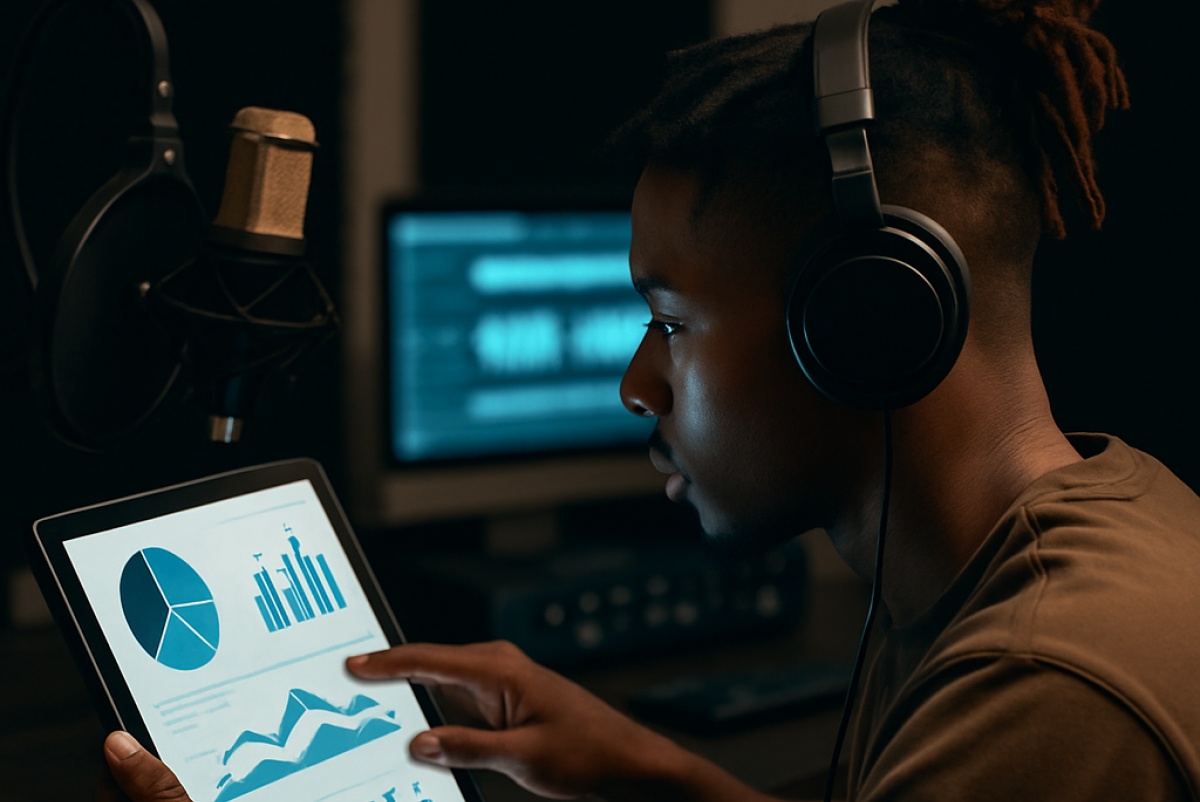In today’s music industry, hip hop artists aren’t just using their ears—they’re using analytics. With streaming platforms offering detailed listener data, independent rappers can now approach music releases with the precision of a marketing team. Understanding the who, where, and when behind your fanbase allows artists to make better creative and business decisions. From choosing the right drop date to booking a show in a hot market, data is becoming a crucial driver of success in modern hip hop.
Leveraging spotify promotion to target the right audience
One of the most effective ways hip hop artists are building early momentum is through spotify promotion, particularly via genre-specific playlists. But the value goes far beyond just racking up streams. When a track gets added to a curated playlist—whether it’s algorithmic, editorial, or user-generated—it opens the door to powerful insights about the audience engaging with that song.
Let’s say a rising artist releases a trap anthem that starts getting attention on a few regional hip hop playlists. Within days, Spotify for Artists provides data on which cities the song is being streamed in most, how often it’s being saved, skipped, or shared, and which demographics are engaging most. This kind of feedback loop gives artists the ability to make real-time decisions: schedule shows in strong markets, double down on the sound that resonates, and fine-tune promotion strategies accordingly.
For example, if a melodic drill single gains traction in Chicago and Toronto, those become key locations to target with localized content, collaborations, or even merch drops. Instead of guessing, artists can now make moves backed by actual listener behavior—and that’s a serious advantage.
A soundcampaign review shows how direct-to-curator tools boost visibility
Organic growth is powerful, but artists often need a little push to get their songs in front of the right ears. That’s where playlist-pitching services come in. A solid soundcampaign review reveals that platforms like these act as a bridge between musicians and playlist curators who already cater to specific styles and moods—an essential strategy in the fragmented world of hip hop subgenres.
What makes these tools particularly useful is the level of transparency and feedback they provide. Artists can pitch a track, see which curators respond, and even read comments from those who reviewed it—whether they accepted it or not. This not only gives artists exposure but helps them understand why a track is or isn’t hitting with certain audiences.
Imagine you’re pushing a lo-fi conscious rap single and it gets picked up by chill study or underground boom bap playlists. Now you’re attracting listeners who value lyrics and vibe over hype. And if a high-energy trap song is repeatedly placed on workout or street anthems playlists, that signals where your music thrives best. These insights help hip hop artists of all styles get sharper about who they’re making music for—and how to reach them more efficiently.
Translating data into real-world strategy
Beyond playlists, streaming data is reshaping how artists approach everything from release timing to tour routing. If a track consistently spikes on weekends or after 9 PM, artists can align their drop schedules to maximize impact. If a song suddenly blows up in Atlanta or Miami, those markets become top priorities for bookings and collaborations.
Even merchandise can be tailored based on listener insights. If an artist’s core fanbase skews young and urban, merch designs, pricing, and styles can reflect that demographic. And when playlist analytics show consistent performance in specific moods—say, high-energy or late-night chill—that vibe can inform everything from cover art to the aesthetic of future releases.
Data isn’t just numbers; it’s a story about your audience—and smart artists are reading that story carefully.
Social media completes the loop
To take it one step further, social media data can reinforce what you’re learning from streaming platforms. Instagram, TikTok, and YouTube metrics help artists understand how fans engage with their image and story, while also serving as real-time testing grounds for new material. If a snippet goes viral on TikTok but the full song underperforms on Spotify, that’s a sign to tweak the rollout strategy or even remix the track for better impact.
When combined, these digital tools create a complete picture. You’re not just reacting to trends—you’re strategically moving based on actual fan behavior. Some of today’s most successful indie rappers have built cult-like followings not through massive radio play or label funding, but by understanding the data and delivering exactly what their listeners want.
The data-driven artist is the future
The bottom line is this: creativity will always be at the core of hip hop, but in the current landscape, the artists who blend passion with precision are the ones rising fastest. Tools for spotify promotion and services evaluated in any honest soundcampaign review show just how many opportunities artists now have to connect directly with the right fans.
If you’re serious about turning streams into a sustainable career, data isn’t just a bonus—it’s the blueprint. Study your metrics, watch your audience, and let the numbers amplify the moves you already want to make. In this era, the smartest hustler wins.
